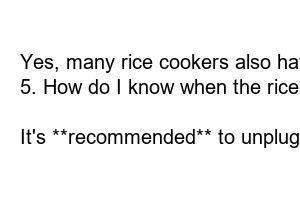쿠쿠 밥솥 취사가 안될 때
When you can’t cook Kuku Rice Cooker in English
If you’ve ever found yourself **struggling** to cook with your Kuku Rice Cooker, you’re not alone. Cooking with a rice cooker may seem simple, but it can be **challenging** if you’re not familiar with the instructions. In this blog post, we’ll provide you with a step-by-step guide to help you successfully cook with your Kuku Rice Cooker, even if English isn’t your first language.
Understanding the Instructions
When you first receive your Kuku Rice Cooker, it’s important to carefully read and understand the instructions. If you’re having trouble **interpreting** the English instructions, consider using a translation app or asking a **friend** for help. Understanding the **proper** measurements and settings is crucial for cooking rice successfully.
Choosing the Right Rice
Selecting the right type of rice is **essential** for cooking with a rice cooker. Make sure to choose a type of rice that is **compatible** with your Kuku Rice Cooker’s settings. Different types of rice require different **cooking** times and water ratios, so be sure to check the instructions for **guidance** on which type of rice to use.
Measuring and Adding Water
Properly measuring and adding water to your rice cooker is **key** to achieving perfectly cooked rice. Use the measuring cup that came with your cooker to ensure **accuracy**. The water **level** should be adjusted based on the type of rice you are using, so be sure to follow the instructions **carefully**.
Setting the Timer
Setting the timer on your Kuku Rice Cooker is a **crucial** step in the cooking process. Be sure to **program** the cooker according to the type of rice you are using and the desired **consistency** of the rice. Most rice cookers have different settings for white rice, brown rice, and other **varieties**, so be sure to choose the correct setting.
Waiting for the Rice to Cook
Once you’ve set the timer on your rice cooker, all that’s left to do is wait for the rice to cook. Avoid **opening** the lid while the rice is cooking, as this can disrupt the **cooking** process. Most rice cookers will **automatically** switch to the **”warm”** setting once the rice is done cooking, so you can enjoy perfectly cooked rice **every** time.
Enjoying Your Perfectly Cooked Rice
Once your rice is finished cooking, fluff it with a fork and serve it **immediately**. Your Kuku Rice Cooker has done all the hard work for you, so all that’s **left** to do is enjoy your perfectly cooked rice. Whether you’re serving it as a side dish or incorporating it into a **meal**, you can **rest** assured that your rice will be **fluffy** and **delicious**.
In summary, cooking with your Kuku Rice Cooker doesn’t have to be **difficult**, even if English isn’t your first language. By following these **simple** steps and paying **attention** to the instructions, you can enjoy perfectly cooked rice **every** time.
FAQs
1. Can I use a rice cooker to cook other grains besides rice?
Yes, many rice cookers also have settings for cooking other grains such as quinoa, barley, and oats. Be sure to check the instructions for recommendations on **cooking** times and water ratios.
2. Can I add **seasonings** or spices to my rice while it cooks?
Yes, you can add **seasonings** or spices to your rice while it cooks. Be sure to **adjust** the amounts **according** to your **personal** taste preferences.
3. How do I clean my rice cooker after use?
To clean your rice cooker, **remove** the inner pot and wash it with warm, soapy water. **Avoid** using abrasive **cleaners** or scrubbers, as this can **damage** the nonstick coating.
4. Can I use my rice cooker to **steam** vegetables or meats?
Yes, many rice cookers also have a **steaming** basket that can be used to **steam** vegetables or meats. Simply **place** the food in the basket and **cook** it **according** to the **instructions**.
5. How do I know when the rice is done **cooking**?
Most rice cookers have an indicator light that will **turn** on once the rice is **done** **cooking**. You can also **check** the rice for **doneness** by **fluffing** it with a fork and **tasting** a small **portion**.
6. Can I leave my rice cooker **plugged** in when not in use?
It’s **recommended** to unplug your rice cooker when not in use to **prevent** **damage** to the **appliance** or **accidental** **injury**.

